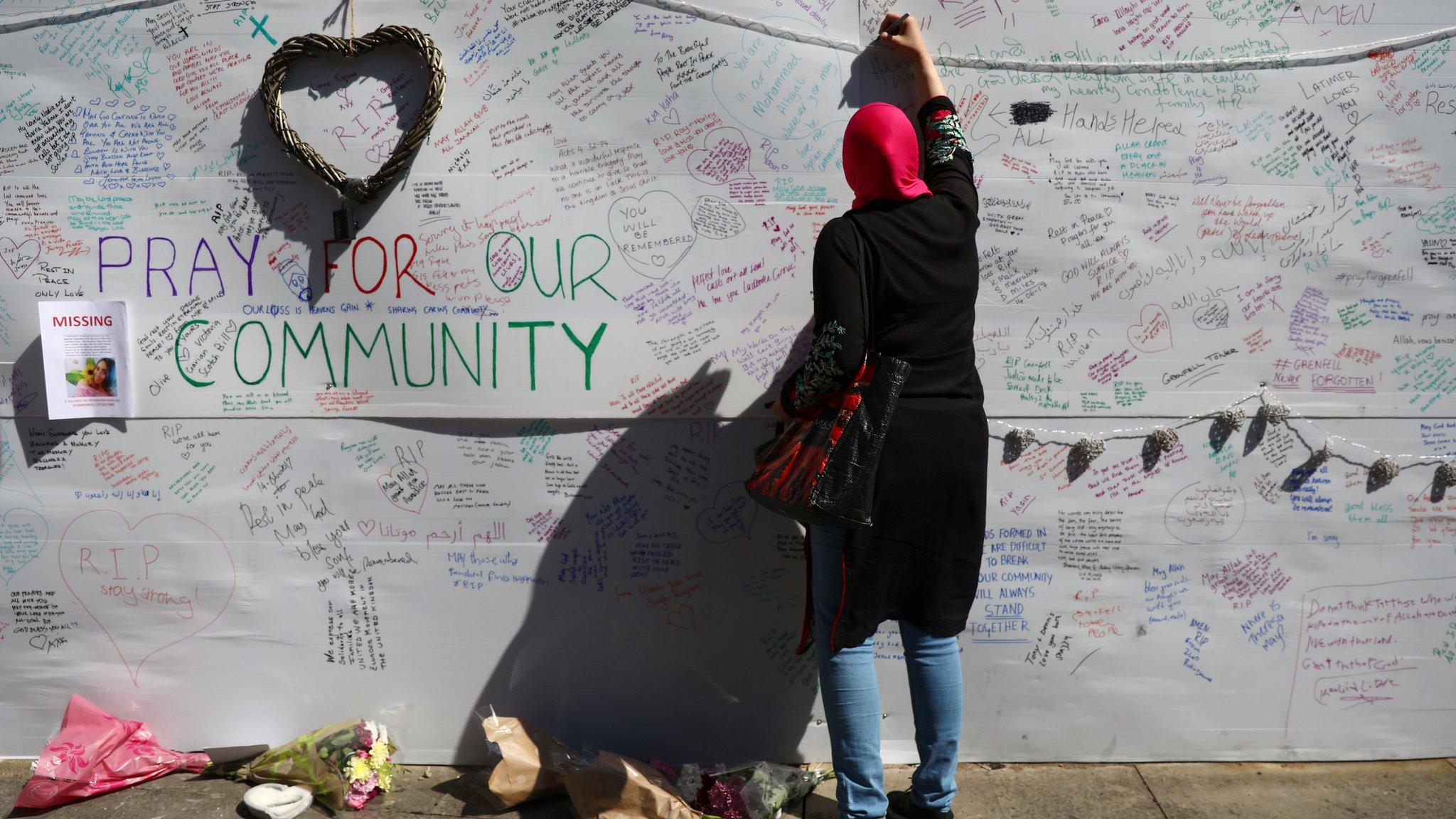Grenfell Inquiry: What is happening?
- Published
Grenfell Tower inquiry: What questions will be answered?
The Grenfell Tower Inquiry is hearing from victims' families this week, nearly a year after a huge fire engulfed the west London tower block.
What happened at Grenfell?
The fire was reported at the 24-storey block in North Kensington at 00:54 BST on 14 June 2017.
It started in a Hotpoint fridge freezer on the fourth floor. Police say it was not started deliberately.
It took until 01:14 BST the following day to bring the fire under control, killing 72 people and destroying 151 homes, both inside the block and nearby.
The fire's "unexpected" ferocity led to questions about the £8.6m refurbishment of the tower block, and in particular the cladding.
What is the inquiry looking at?
Prime Minister Theresa May ordered a full public inquiry the day after the fire. "We need to know what happened, we need to have an explanation of this," she said at the time.
The inquiry has been set up to determine three things: what happened, why, and what can be done to prevent anything similar happening again.
There will be two phases of the inquiry: the first will examine how the blaze developed and the second will look at how the tower became exposed to the risk of a major fire.
It is separate to any police investigation.
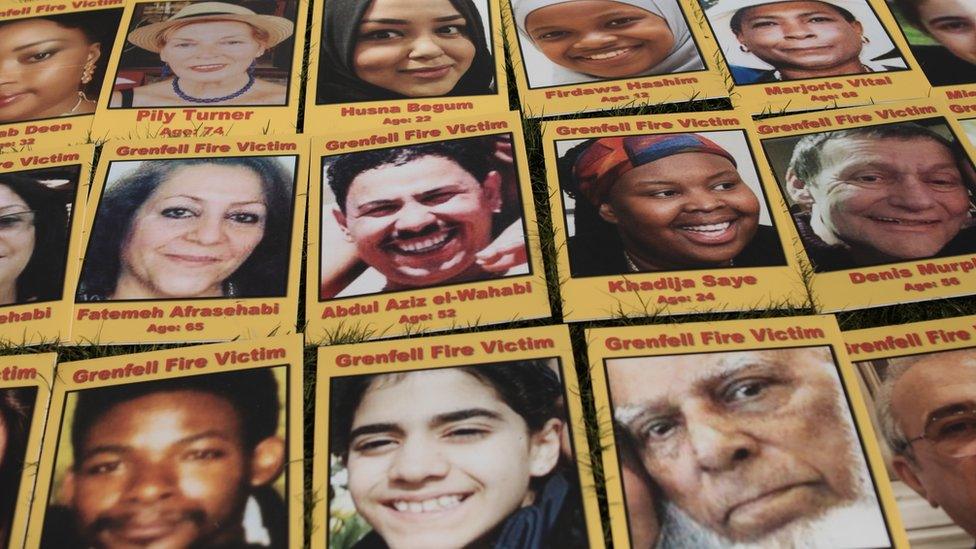
Who is in charge?
A retired judge, Sir Martin Moore-Bick, was chosen by the prime minister to lead the public inquiry in June 2017.
He opened the inquiry exactly three months after the fire on 14 September 2017.
At the time, he said: "The inquiry process is not adversarial, it's not to punish anyone or award compensation. It's simply to get to the truth."
How big is the inquiry?
According to the inquiry, 547 individuals and organisations have been granted core participant status, external.
Sir Martin is supported by a team of 35 people, external, including a legal team, civil servants and three assessors.
Nine expert witnesses have so far been announced, focusing on the spread of the fire, the regulation of the building, the fire brigade's role and the impact of gas and water supplies to the building.
By March, some 267,000 documents were received and reviewed, external by the inquiry.
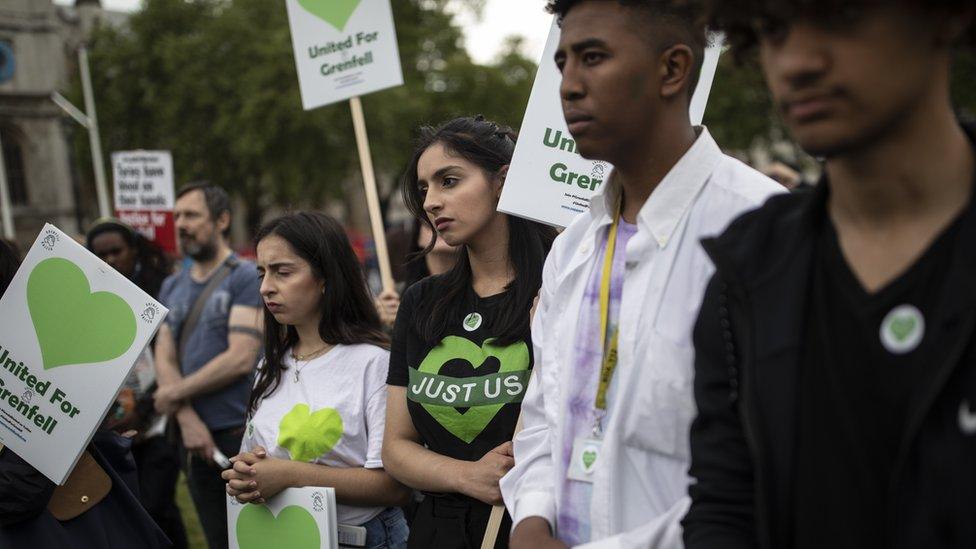
Survivors have pushed hard for more diversity on the inquiry panel
Why has the inquiry been controversial?
Many of the survivors of the Grenfell Tower fire were unhappy with the choice of Sir Martin.
As a former judge, he was considered too "establishment" and out of step with the sentiments of the local community.
Grenfell United, which represents survivors and the bereaved, said they feared the inquiry would be a "whitewash".
Critics were also angry at Sir Martin's refusal to appoint a person from the Grenfell community to an advisory panel that will consider the evidence with him.
More than 156,000 people signed a petition, external calling for individuals from a range of backgrounds to sit on a panel.
Following pressure from victims' families, the prime minister agreed on 11 May that two experts will sit with Sir Martin in phase two of the inquiry.
Who will be involved?
All the families of those who died. They have been invited to take part in the inquiry as "core participants".
They will receive all the relevant evidence in advance of the hearing and can suggest lines of questioning that they would like to see pursued.
The inquiry will also hear from survivors, Grenfell residents, firefighters and expert witnesses.
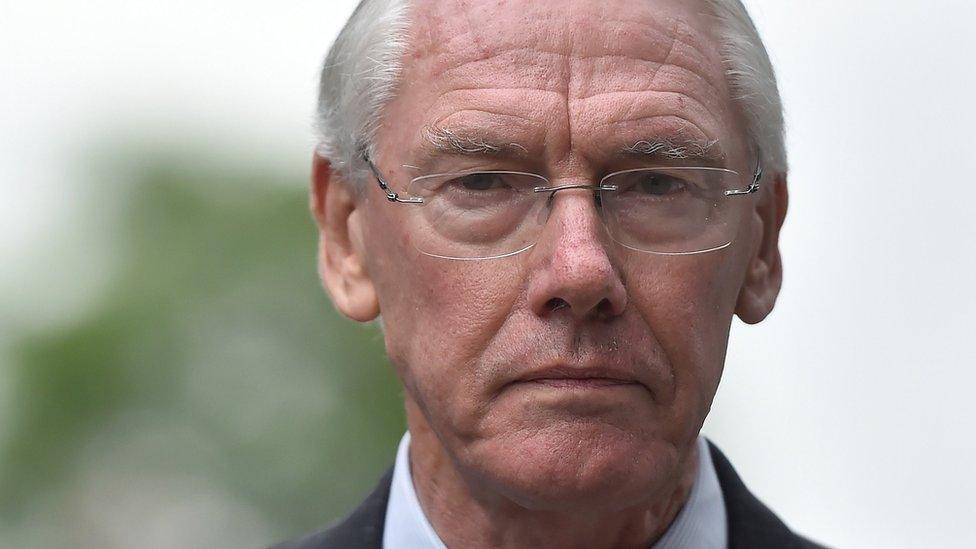
Sir Martin has faced hostility from the bereaved and survivors of the Grenfell Tower
How many deaths will be examined?
On 16 November 2017, officials said 71 victims of the fire had been identified, including baby Logan Gomes, who was stillborn in hospital after the fire.
However, the deaths of 72 people will be looked at by the inquiry, including Maria Del Pilar Burton, 74, who died in January 2018.
She had been in hospital since she was rescued from the 19th floor.
So what can we expect from phase one?
Nine days of commemoration hearings began on Monday, 21 May with a 72-second silence for the victims.
Organisers say it is "an opportunity for the families of those who lost their lives in the fire to provide a tribute of them for the inquiry record".
The first tribute on the opening day of the inquiry was from the father of a baby stillborn after his parents escaped the blaze.
Five others were also remembered on the first day.
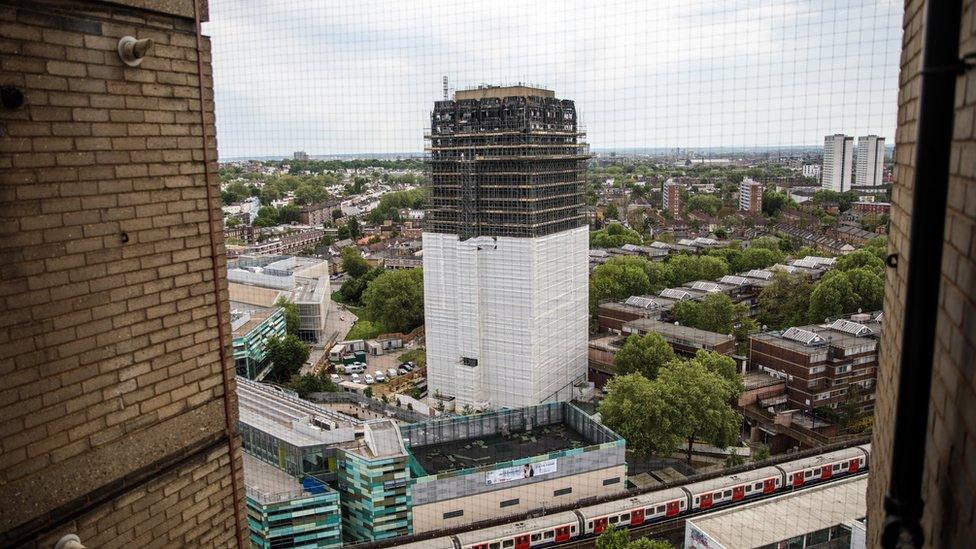
The inquiry is then scheduled to hear from its first expert witnesses on 18 June., external
Evidence from firefighters who worked on the scene will be heard in late June and early July.
Survivors, the bereaved and local residents are set to give their evidence at the beginning of September.
How long will it take?
Closing statements of phase one of the inquiry are not expected until the end of October.
The second phase is not expected to begin until the new year when Sir Martin will be joined by the two additional panel members, who have yet to be named.
Part two of the inquiry will focus on the construction, refurbishment and management of the building prior to the fire.
After the inquiry has heard all of the relevant evidence, Sir Martin will prepare a report for the prime minister, who has promised to publish the findings in full.
- Published17 May 2018
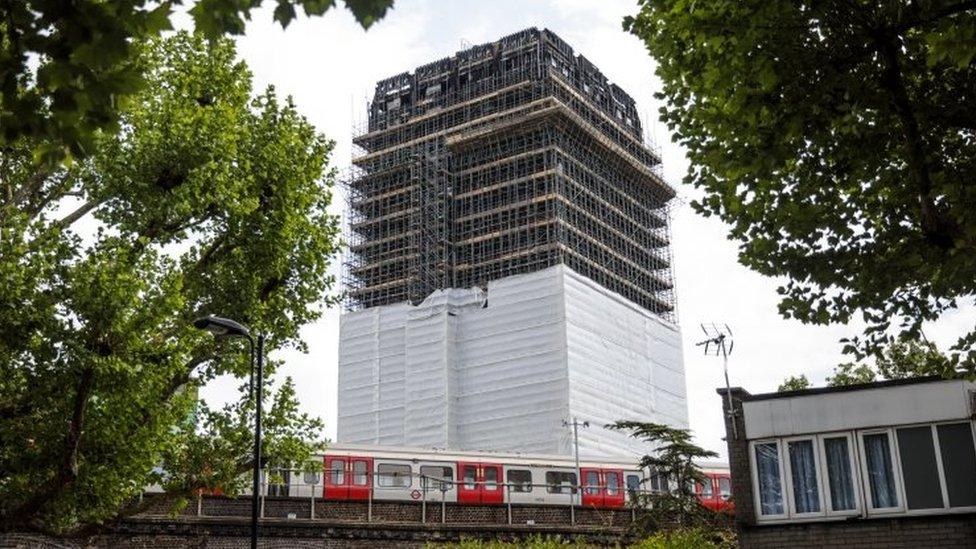
- Published18 May 2018
